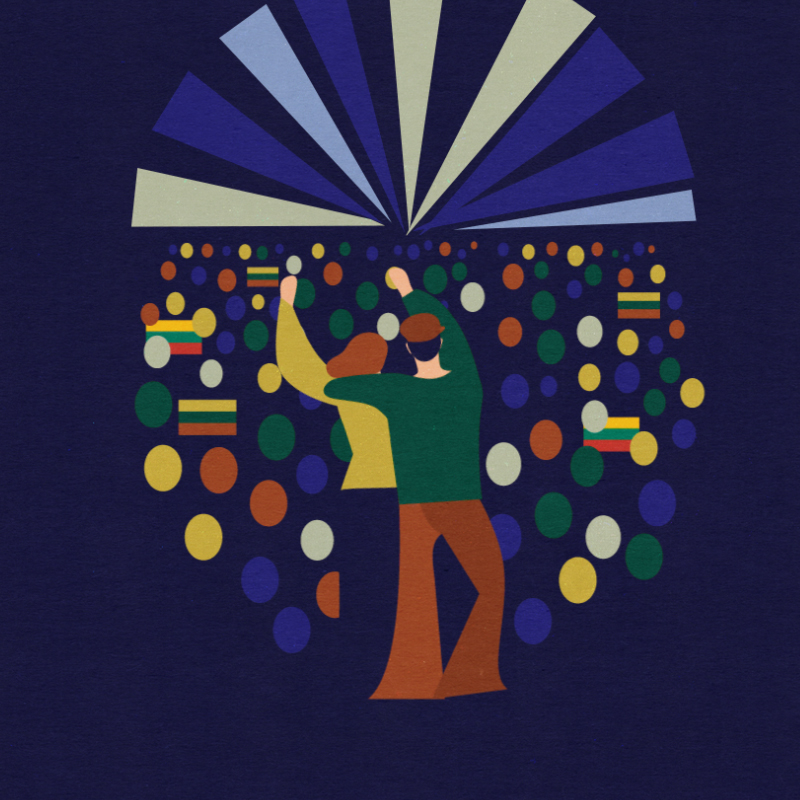Marches of Rock for Lithuanian Independence
> BACK TO 100 STORIESListen to this text (Lithuanian):
Nowadays, rock music concerts are common in Lithuania. Rock and heavy metal bands regularly play in Lithuanian clubs, famous performers from abroad often come, and festivals are held in open spaces. However, for a long time in the occupied countries of the Soviet Union, including Lithuania, rock music could be played only in small, little known clubs. The Soviet government, which saw the "bourgeois West" as its main enemy, fought against various influences from Western culture, including rock, jazz, and punk rock music. Even the popular rock and pop band The Beatles had long been criticised in the Soviet Union.
Of course, Western music and fashion reached Soviet-occupied countries through illegally sold magazines and music recordings. Young people mimicked the clothing and hairstyles of musicians. For example, they grew their hair long, and made and wore flared trousers to look like The Beatles. Those interested in Western culture gathered in apartments, where they listened to recordings, played music themselves, and discussed books and world events. Those who belonged to various subcultures such as hippies or punks, were followed by state security services. At times, the Soviet police carried out raids and arrested long-haired young people wearing flared jeans and flowery shirts on the street. They were taken to police stations where they had their hair forcibly cut. Some were even locked up in psychiatric hospitals. The punk movement emerged in Lithuania in the 1980s. Lithuanians were different from Western punks, who promoted anarchy and fought against any system, because they stood for national values and the freedom of Lithuania. They drew a Lithuanian symbol of freedom – Columns of Gediminas – on their leather jackets and shaved their heads.
In the 1980s, the power of the Soviet government weakened, and people dared to dream about freedom even more. It was then that Algirdas Kaušpėdas, the vocalist of the rock band Antis, came up with the idea of organising Roko Maršas [Eng. The March of Rock] – a festival with concerts in various Lithuanian cities. The Vilnius Youth Music Club worked on the implementation of this idea. The March of Rock through Lithuania was organised three times over the period of 1987–1989. The ideas of freedom announced during The March of Rock festivals corresponded to the aims of Sąjūdis – a powerful social movement. People waved the tricolour Lithuanian flags during the concerts, musicians chanted ‘freedom for Lithuania’, and demanded the closure of the Soviet military bases in Lithuania. Part of the funds raised at the concerts went to public organisations: for the Lithuanian Culture Foundation in 1987, for the Reform Movement of Lithuania in 1988, and the Society for the Physically Disabled of Lithuania in 1989.
Over 130.000 people came to The March of Rock festivals over three years. Bands such as Antis, Katedra, BIX, Už Tėvynę, and Foje performed at the concerts. People flocked to the rock concerts not only for the music, but also to be among like-minded people. The rock concerts, which gathered big crowds in Lithuania, were new and allowed people to feel the power of freedom and unity. Together with the Sąjūdis movement and the Lithuanian Green Movement, which stands for ecological ideas, The March of Rock festivals encouraged Lithuanian society to fight for the restoration of the Lithuanian independence.

